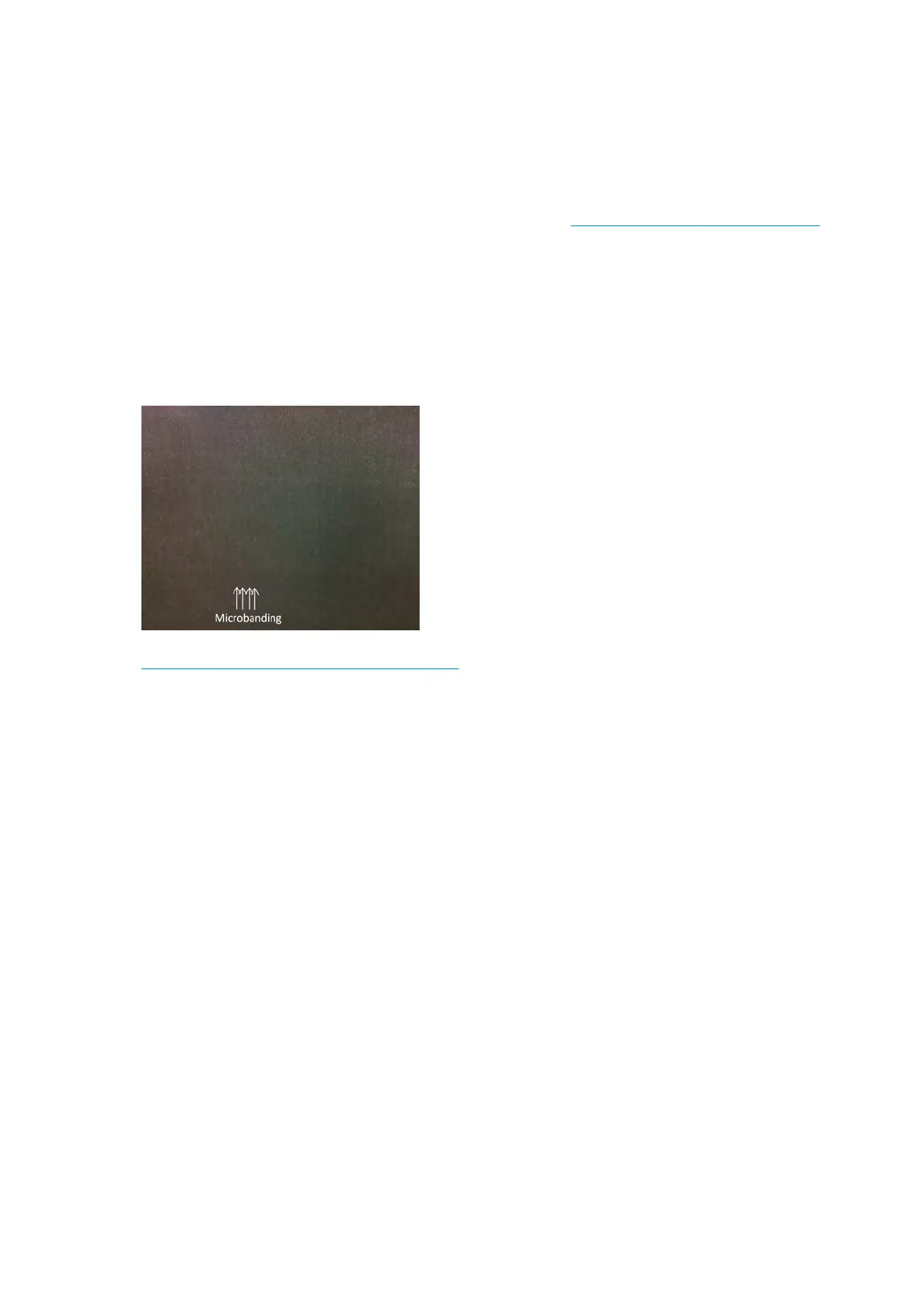●
Incr
ease the number of passes.
●
Reduce the ink density.
●
Check the printhead-to-ribs spacing in the Internal Print Server. If it is higher than normal, try reducing
it.
●
Check that the aerosol
lters are not saturated or broken (see Replace the aerosol lters on page 124).
Vertical banding
Vertical banding means that your print suers from added vertical lines or bands, in a regular pattern.
Microbanding
This consists of vertical lines less than 2 mm (0.08 in) wide, of very high frequency, that appear in some area
lls. Often they are hardly visible.
Microbanding is probably caused by a faulty printhead. Print the printhead alignment diagnostics plot (see
Printhead alignment diagnostics plot on page 140) to nd which printhead is responsible, and replace the
printhead.
Wide bands 2 cm apart
If the bands are about 2 cm (0.8 in) apart, it means that the substrate is well controlled in the print zone and is
in contact with all the ribs in the platen as intended. However, if the suction is too high, a dierence in grain
can be seen, and bands appear 2 cm apart.
Here are some tips for solving this problem:
●
Align the printheads.
●
Check the scan-beam height in the Internal Print Server. If it is higher than normal, try lowering it.
●
Decrease the curing temperature to reduce deformation.
●
Change from 4 to 6 colors to reduce grain.
322 Chapter 10 Troubleshoot print-quality issues ENWW

